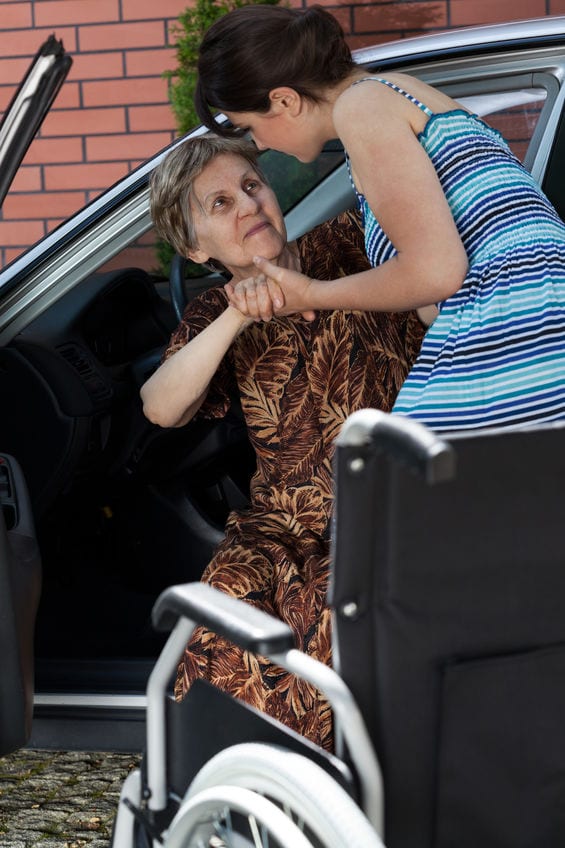Living with Mobility Challenges
My husband has primary progressive multiple sclerosis (MS). Though he can move both arms and legs, he can move none of them well enough to accomplish tasks. Nerve damage from MS, along with muscle spasms, and weakness from lengthy hospital stays, contributed to his current state of powerchair dependency. As a result, he needs full assistance with all activities of daily living and has significant mobility challenges. He currently uses a powerchair. However, since his condition progressed, he also has experience using a cane, rollator, and manual wheelchair.
Read Instructions
Each device came with blessings and challenges. However, they shared one commonality: there was a right and wrong way to use them. If he used them incorrectly, he could get hurt. On the other hand, using them correctly was safer, easier to handle, and they worked better. However, not being one who liked to follow instructions, my husband often learned those truths the hard way.
Walking Stick (Cane)
At his initial diagnosis in 2006, Lynn was very athletic and only showed occasional muscle weaknesses. He ran, lifted weights, rode bikes, and could physically do whatever he wanted without difficulty. He functioned completely independently. However, his physical decline and subsequent mobility challenge rapidly followed. As his MS fatigue and lack of coordination increased, he used a walking stick (cane).
Canes Have Personality
Canes can be quite charming in design or a basic no-frills version. Lynn ordered one that looked like it came right out of the Hobbit’s Forrest. Having a unique cane seemed to help him accept that he was using one. Lynn saw it as an imagine enhancer rather than a symbol of being disabled; therefore, he felt more comfortable using it. He did not want anyone thinking of him as weak and was struggling with accepting the possibility of one day not being able to walk.
With the use of a cane, he acknowledged his instability and resignation to the possibility that he might injure himself without it. He experienced several nasty falls and was fortunate not to have broken bones a few times. The walking stick helped him regain his balance somewhat when he started to wobble. It wasn’t as much as he needed but as much as he was willing to accept at that stage of his condition.
Didn’t Help Fatigue
While the walking stick helped prevent some falls, it did not help reduce fatigue. Furthermore, Lynn admitted that he still fell frequently when using the stick when he was truthful. He needed support on both sides of his body, such as handrails on the walls and rest areas if walking any great distance. Obstacles in his pathway posed a significant challenge to maneuver around and keep his balance, especially if no walls were nearby. The walking stick did not give him the support he needed at those times. However, his stubbornness kept him using it for almost a year before he progressed to a rollator.
Accepted Rollator
Lynn is a proud, stubborn man and does not like to rely on anyone. Case-in-point, rather than use his walking stick, he preferred “walking the walls” as his “support-of-choice” whenever he could use them. Family and friends grew concerned as he used a walking stick rather than a rollator. Finally, a friend brought one to our home and dared him not to use it since it was a present. Pride lost, gratitude won that battle, and the rollator became a part of his life. Unfortunately, his ability to walk using the rollator became progressively worse, and he regularly used the rollator as a wheelchair. Rather than walk with it, he would sit on it with his feet off the ground, and I would push him along. Though I also “pushed” the need for him to get a wheelchair, he continued to refuse to consider the idea until one day in 2009, when forced to face reality.
Fall Became Reality Check
Lynn was home alone. He started across the floor on the way to take a shower. Suddenly, feeling his legs grow weak, Lynn started to go limp. Before hitting the floor, he reached over and grabbed the cell phone to call for help.
For over an hour, he tried unsuccessfully to get up. First, he didn’t want to call 9-1-1 due to being naked. Then, after calling me to return from a conference two hours away, he waited an additional three hours alone on the floor, afraid of becoming overheated, dehydrated, and emotionally traumatized.
After arriving and confirming he did not need emergency care, we worked together to help him return to bed. Finally, with tremendous effort, we managed to get him up and began treating the aftershock of the experience.
Frank Talk
I ordered emergency alert buttons to wear the next day since either of us could be alone and need help.
- We talked frankly about his abilities and limitations while identifying his safety needs and what level of assistance he needed full time.
- We made an appointment with a mental health professional to discuss his difficulty in adjusting to his illness’s realities.
- We met with a physical therapist to determine the correct mobility device he needed for this stage of his disability.
Though traumatic, the fall had brought reality home. Lynn had no more misconceptions. It was a turning point that all people with chronic illness seem to face at some point. Each person has that moment where it all becomes real for them. That fall was Lynn’s. He was just very fortunate that it turned out as well as it did. After that day, he accepted the need for a wheelchair and began to adapt.
Adjusting to Wheelchair
Adjusting to a wheelchair brought many challenges especially related to entryways. For example, many doorways had elevated entryways or steps requiring the use of a 2-3-inch ramp to have a smooth transition between levels. In addition, narrow doorways, especially bathrooms, had limited space to maneuver a turn-around inside the room.
Doorways
Powerchairs often have a joystick that sets slightly apart from the chair, making it difficult to move all the “parts” of the wheelchair through an opening at one time without something getting stuck or broken. Lynn’s elbows and hands display battle scars as evidence of the difficulty.
Automatic door openers frequently aren’t timed correctly. Because the timers are off, both doors open at the same time. Therefore, the time runs out for the second door when the wheelchair is attempting to pass through, either hitting the chair or trapping the rider between the two doors.
Stores
Dressing rooms in clothing stores are not set up for members of the opposite sex to enter together, making it difficult for me to help him try on clothes in a store. Although truthfully, it’s almost impossible anyway because the doors into the dressing rooms are too small for the wheelchair to enter, and turning around is impossible once inside.
Stores don’t have single-occupant accommodations usually, and if they do, they are too small for wheelchairs. Therefore, we either need to close the men’s or women’s public restrooms. Someone stands guard while I accompany him into one of the multi-stall restrooms so I can catch him in privacy.
Wheelchairs don’t fit under the sinks well enough to reach the hand soap. Likewise, it’s very difficult to reach paper towel holders or roll them manually if they get stuck in a wheelchair.
While items placed out of reach are frustrating, requesting assistance from a store assistant could be an option if the store had available resources. However, since Covid, it’s rare to find extra help. Furthermore, shopping is difficult anyway. It’s almost impossible to enter a store with a wheelchair and be able to move freely up and down the aisles due to all the things sitting in the aisles now.
In addition, too many displays sit in the aisles for someone who cannot leave their wheelchair to move an object to the shop. Therefore, using the pick-up or delivery option offered by merchants works best for him.
Transporting Wheelchair
As my husband’s mobility challenges became more substantial and his ability to move became less, transporting him and his mobility devices became more difficult. As a result, I needed a way to transport a wheelchair.
For many years, I transported Lynn using a four-door sedan. I manually transferred him to and from the passenger seat from his wheelchair using many prayers and personal body strength. I almost dropped him a few times in the summer when his MS was particularly affected by the heat, and he could not help me with the transfer. After one very close call, we decided that we could not risk having an accident during a transfer and would have to incur the debt necessary to buy a conversion van.
Bank Denied Loan
As with all caregiving lessons, it was an eye-opener. The cost of the van was extremely high compared to a typical van of that same model. Not realizing that would be an issue, I did not submit additional evidence of need related to a conversion system, and my bank refused the loan, saying the seller was asking too much. I had to submit evidence that wheelchair transport required a conversion kit and the average cost for installation. As a result, my simple purchase took two additional weeks to receive approval. I almost lost the option to buy.
Learning Curve on Equipment
We finally got approved, and then I learned to use the equipment. All those straps to secure the wheelchair! The first time I drove the van, the door wouldn’t close due to parking on uneven pavement. I learned I have two batteries, and one runs down the other if I leave the radio on when I turn the motor off because it creates a parasitic bleed. There are all sorts of new and exciting discoveries with this van, but I wouldn’t trade it for the world. It’s a lifesaver, and I will never be without one again while a powerchair is part of our lives.


